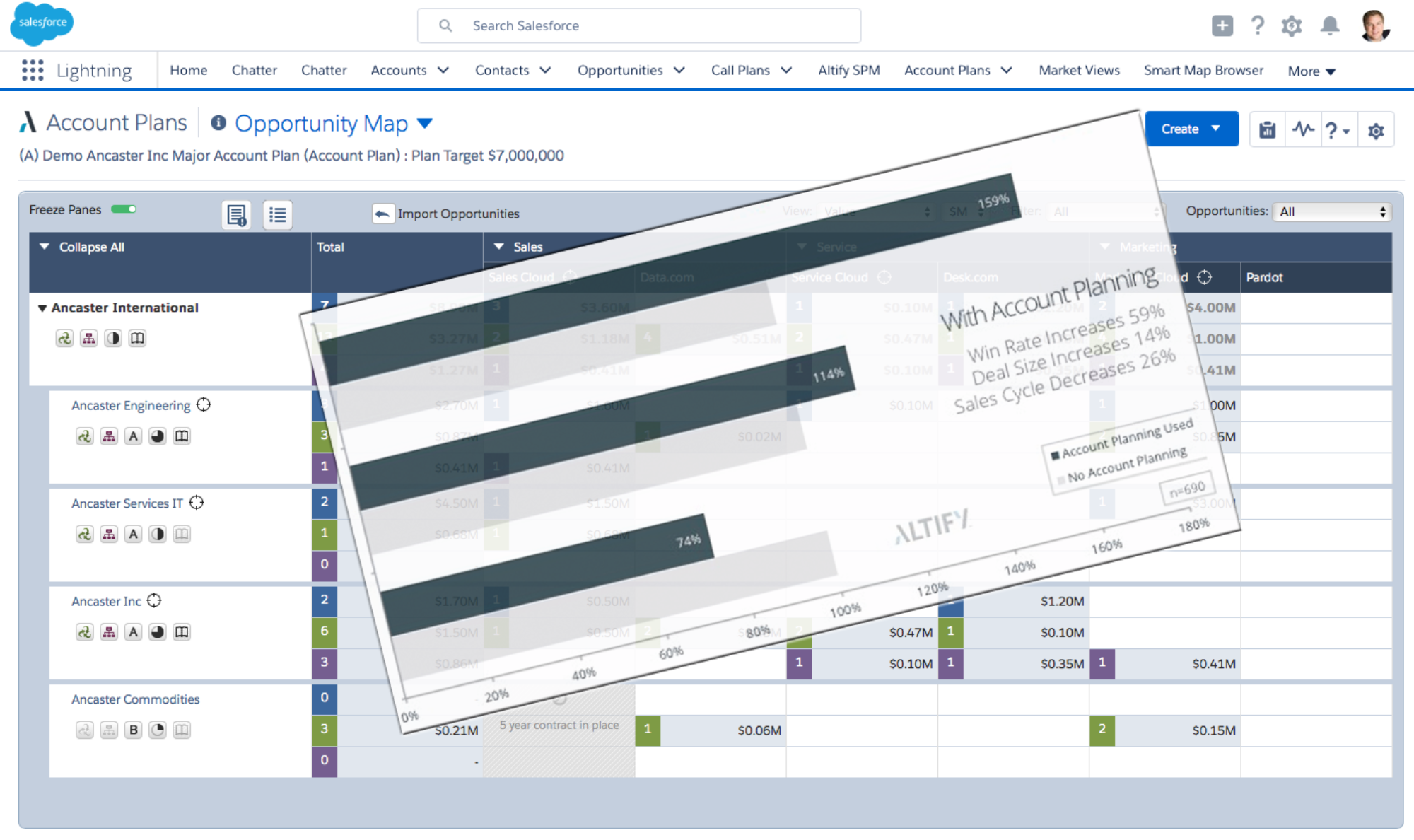Here are 8 facts from the study:
1. Most revenue comes from existing accounts
Companies gain the majority of their revenue from their existing customers. It is well understood that revenue from existing customers is easier to get and is more profitable. The extent to which companies depend on their existing customers is a surprise to some. As you can see from the chart, most companies acquire more than 60 percent of their revenue from companies to whom they have sold before.
2. Win rate is higher in existing vs. new accounts
You want to win more often than you lose. In existing accounts that happens 56 percent of the time. As you might expect, most companies have a much lower win rate when selling to new accounts. 9 out of 10 companies selling to new accounts lose more than they win.
3. Better win rate is most common benefit
A full 74 percent of participants say account planning results in a higher win rate. In truth though, increased win rate does not happen by accident. 72 percent see Increased Understanding Of The Customer’s Business as a key benefit of account planning and of course these are connected.
4. Adoption of account planning is growing
When Account Planning in Salesforce was published in 2013, just over a third of companies (36 percent) were practicing account planning. In that book it was suggested account planning would become the most effective sales and marketing activity and that companies should consider reallocating marketing budgets. Now nearly 50 percent of companies have account planning programs in place. That’s a 39 percent (50/36) increase in account planning in just three years.
5. Benefits increase for those selling complex solutions
The #1 challenge for today’s sales organizations is the inability of the sellers to connect their solutions to their customer’s business issues. This issue is even more pronounced when selling a complex solution. Enter account planning. The benefits from account planning – already considerable for the general population – are even greater for those who are selling complex solutions.
- Better Executive Access is up 16 percent over general population
- Increased Deal Size is up 15 percent
- Identify Non-Competitive Deals is up 14 percent
- Shorter Sales Cycle is up 9 percent, and
- Increased Understanding of Customer’s Business is up 8 percent
6. Improved win rate, deal size, and sales cycle
One of the critical metrics that all sales organizations should measure is sales velocity. By sales velocity we mean the revenue that can be achieved in a given period, whether that is a day, month, quarter or year. No matter how complex your business, there are really only four levers that you can pull to impact your sales velocity: Number of Deals, Win Rate, Average Deal Size and Sales Cycle. For companies who use account planning: Average deal size increases 14 percent, sales cycle decreases 26% and the frequency of those who win more than they lose is 59 percent higher.
7. Win rate grows in both new and existing accounts
Based on analysis of the data, providers of complex solutions, for EXISTING accounts, the percentage that win more than they lose improves by 60 percent when account planning is fully operationalized. For NEW accounts, the percentage that achieve win more than they lose improves by 71 percent when account planning is fully operationalized, and by 57 percent even when account planning is only partially used.
8. Major white space opportunity
Less than 36 percent of companies sell more than half of their solutions to each customer. This is a major opportunity for sellers to increase revenue in their customer accounts. To illustrate that point, we looked at the responses from the providers of Very Complex solutions. In this case when account planning is fully operationalized, solution penetration goes up by 69 percent.










